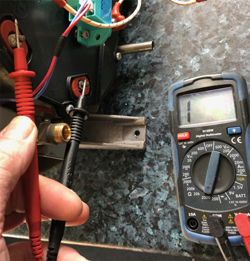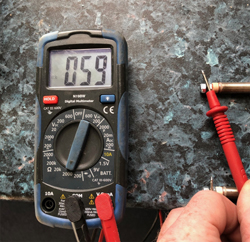- Call us now: 01579 321 041
The 240v element on the Truma combi works in the same way as any other element. There is an electrical resistance through the element that causes it to heat up.
If this fails for any reason then the element will not heat up and cause the combi not to work. If the element fails and goes directly to earth then the MCB or most likely the RCD will trip out as soon as the heater is switched over to 240v. This is a fairly conclusive indication that the element has failed.
If however the element failed the other way, the combi may nor register a fault as it thinks there is no problem. The heater may not heat up at all if an element fails, or it may only work on half power if only one of the elements has failed.
We can carry out an Ohms test on the 240 system at the 240 inlet and operate the heater at half power, then full power to see if we get a reading, but as a customer you may not have access to the equipment needed to do this.
The only other way to test the element is to carry out a resistance test on the element itself. In most cases the heater will have to be removed to do this to gain access to the right hand side panel which has to be removed to get to the element.
Obviously this will need some technical skill so I would recommend a competent person carry out this work.
If it is possible to remove the right hand panel in situ then a continuity test can be carried out directly on the element.
Before any work is carried out make sure the 240v lead is removed from the caravan.

This shows that there is no continuity through the element so it will not heat up.

And this shows the correct resistance the new element should have to allow it to heat up.
It is worth checking both elements as only one may have failed, and removing the element from the heater can be a bit of a frustrating job. The most effective way I have found to date is to use a thin punch and punch the top then the bottom arms in turn moving the element out about 3 mm at a time until you are able to get a hammer in to tap it out from the other end, but this is definitely a heater out job.